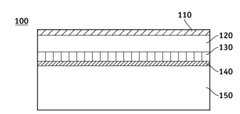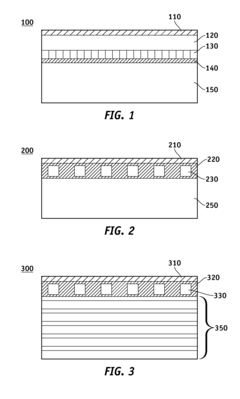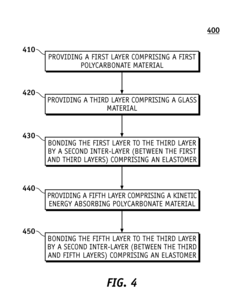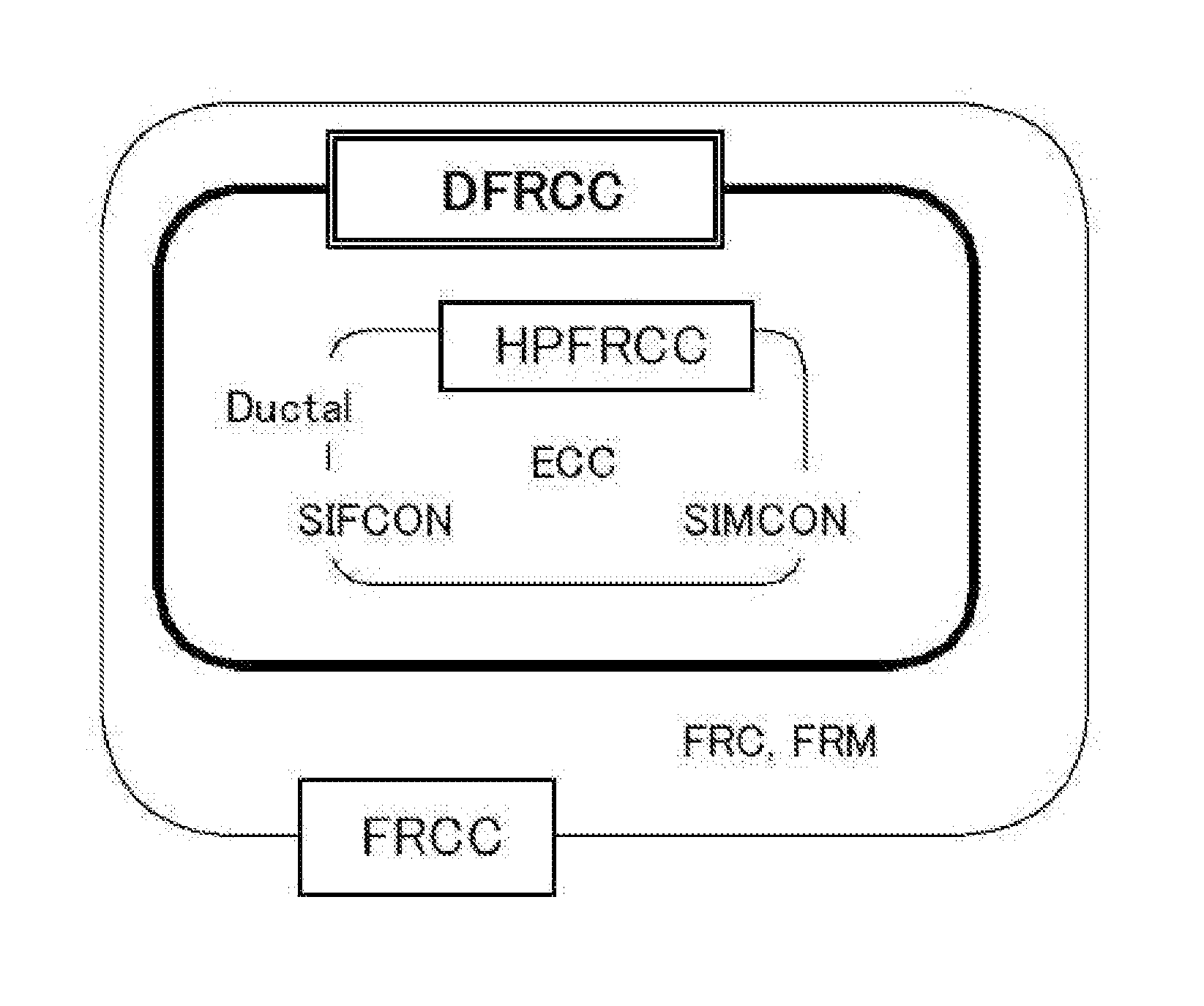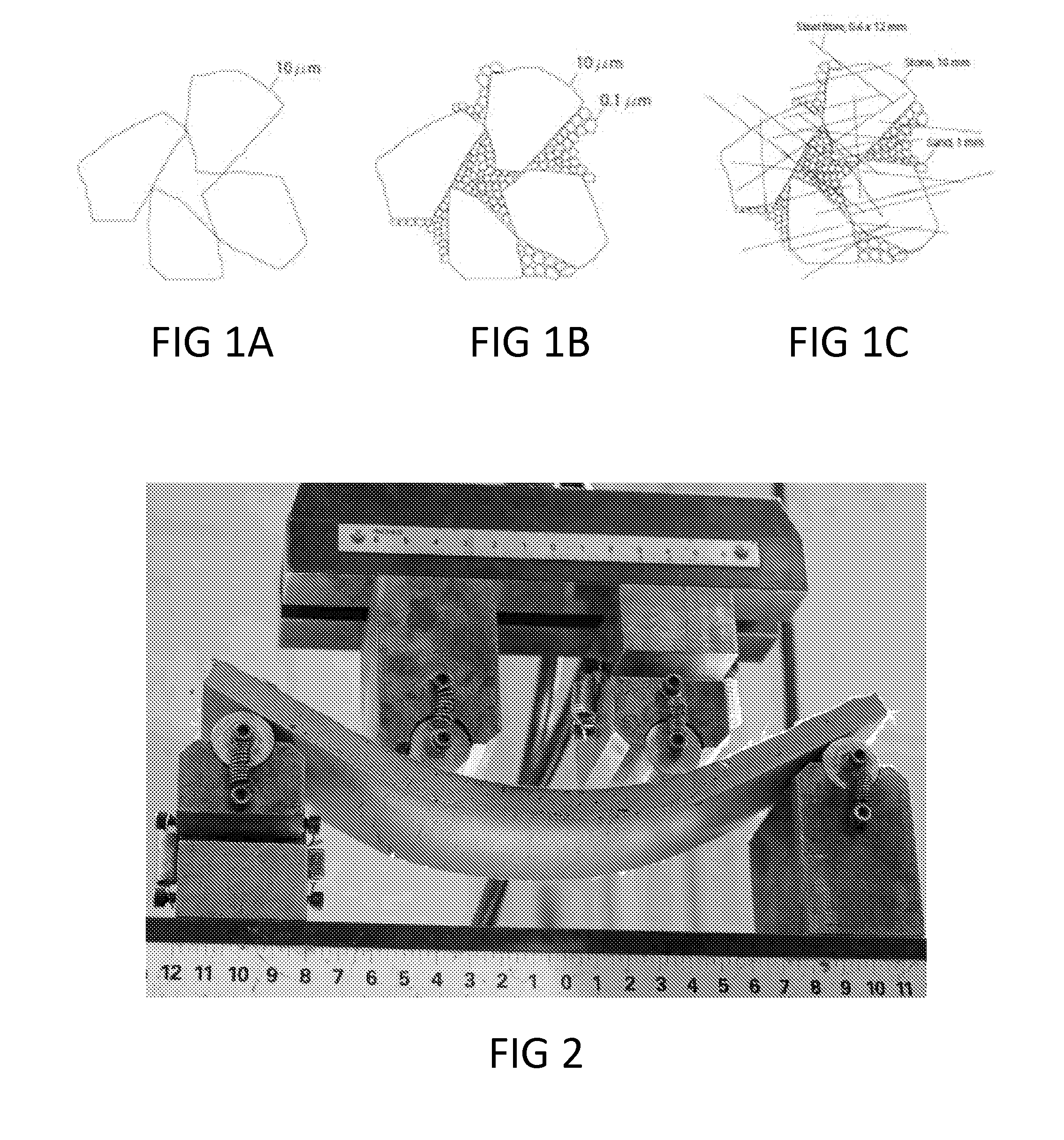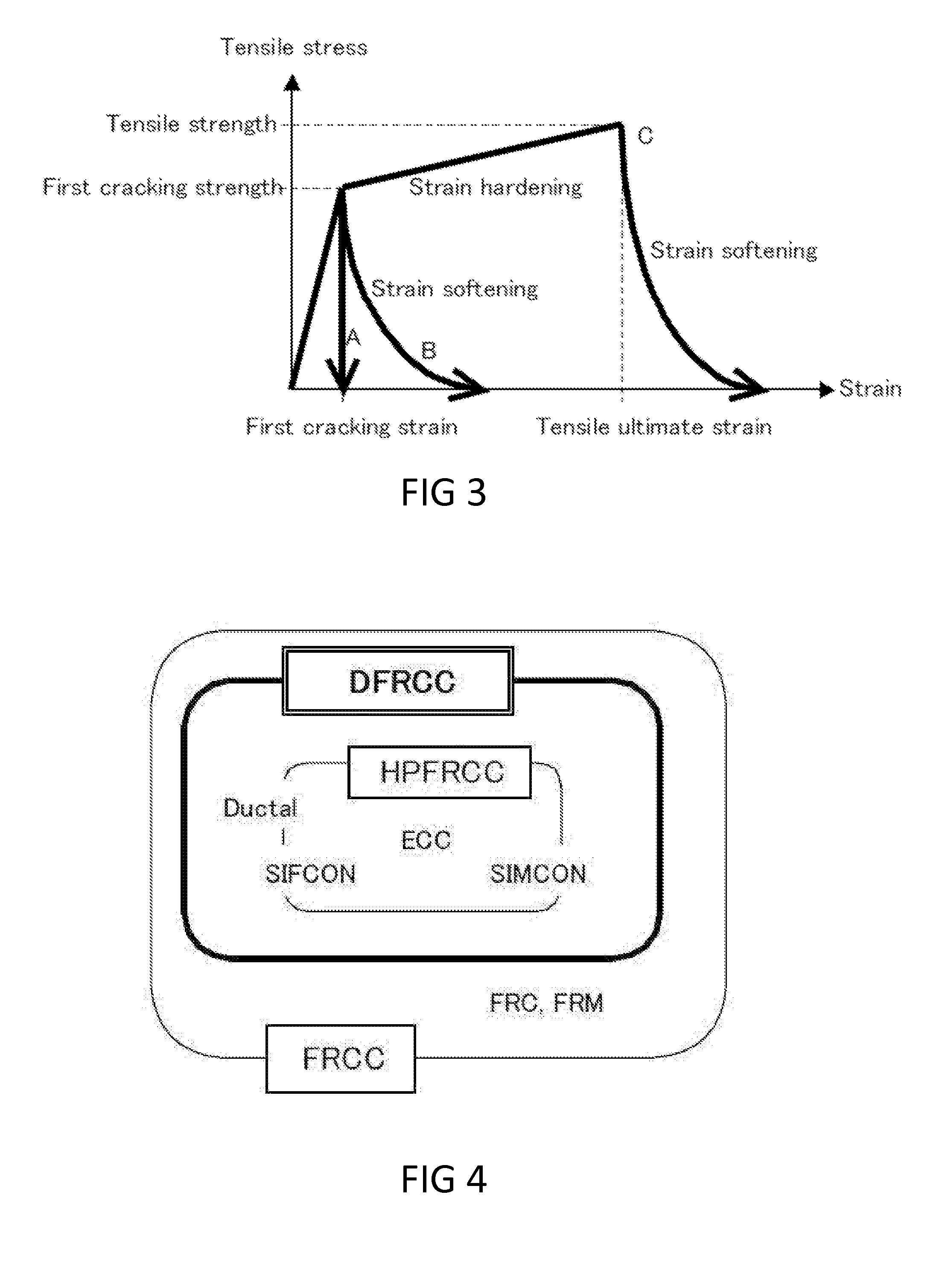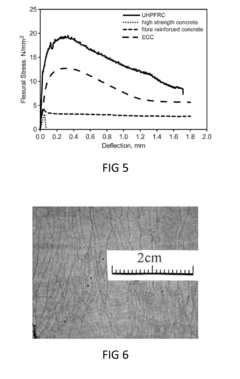Emerging Polycarbonate Technologies in Defense
JUL 1, 20259 MIN READ
Generate Your Research Report Instantly with AI Agent
Patsnap Eureka helps you evaluate technical feasibility & market potential.
Polycarbonate Evolution in Defense
Polycarbonate has undergone a remarkable evolution in the defense sector, transforming from a simple transparent material to a critical component in advanced military applications. The journey began in the 1950s when polycarbonate was first synthesized, offering a unique combination of strength, transparency, and heat resistance. Initially, its use in defense was limited to basic protective gear and vehicle windows.
The 1970s and 1980s saw a significant leap in polycarbonate technology, with the development of improved manufacturing processes and the introduction of specialized grades for military use. This period marked the beginning of polycarbonate's widespread adoption in ballistic protection, aircraft canopies, and military optics. The material's ability to withstand high-impact forces while maintaining optical clarity made it an invaluable asset in combat situations.
As defense requirements became more sophisticated in the 1990s and 2000s, polycarbonate technology evolved to meet these challenges. Advanced coating techniques were developed to enhance scratch resistance and reduce glare, crucial for maintaining visibility in combat scenarios. The introduction of nanocomposite polycarbonates further improved impact resistance and thermal stability, expanding the material's applications in armor systems and aerospace components.
The turn of the millennium brought about a new era of polycarbonate innovation in defense. Smart polycarbonates, capable of changing properties in response to external stimuli, began to emerge. These materials could adapt their transparency, color, or even structural properties based on environmental conditions or threat levels, providing dynamic protection for military personnel and equipment.
Recent advancements have focused on integrating polycarbonate with other materials and technologies. Multi-layer composites combining polycarbonate with other high-performance polymers or ceramics have resulted in lighter, stronger protective systems. Additionally, the incorporation of embedded sensors and electronic components within polycarbonate structures has led to the development of intelligent armor and communication systems.
The latest frontier in polycarbonate evolution for defense applications involves biomimetic designs inspired by natural structures. Researchers are exploring ways to mimic the impact-resistant properties of materials like nacre (mother-of-pearl) in polycarbonate composites, potentially revolutionizing lightweight armor design. Furthermore, self-healing polycarbonates are being developed, capable of repairing minor damage autonomously, thus extending the lifespan and reliability of defense equipment.
As we look to the future, the evolution of polycarbonate in defense continues to accelerate. Emerging technologies such as 3D printing and molecular engineering promise to unlock new possibilities for customized, high-performance polycarbonate solutions tailored to specific defense applications. The ongoing research into sustainable and recyclable polycarbonates also aligns with the growing emphasis on environmental responsibility in military operations.
The 1970s and 1980s saw a significant leap in polycarbonate technology, with the development of improved manufacturing processes and the introduction of specialized grades for military use. This period marked the beginning of polycarbonate's widespread adoption in ballistic protection, aircraft canopies, and military optics. The material's ability to withstand high-impact forces while maintaining optical clarity made it an invaluable asset in combat situations.
As defense requirements became more sophisticated in the 1990s and 2000s, polycarbonate technology evolved to meet these challenges. Advanced coating techniques were developed to enhance scratch resistance and reduce glare, crucial for maintaining visibility in combat scenarios. The introduction of nanocomposite polycarbonates further improved impact resistance and thermal stability, expanding the material's applications in armor systems and aerospace components.
The turn of the millennium brought about a new era of polycarbonate innovation in defense. Smart polycarbonates, capable of changing properties in response to external stimuli, began to emerge. These materials could adapt their transparency, color, or even structural properties based on environmental conditions or threat levels, providing dynamic protection for military personnel and equipment.
Recent advancements have focused on integrating polycarbonate with other materials and technologies. Multi-layer composites combining polycarbonate with other high-performance polymers or ceramics have resulted in lighter, stronger protective systems. Additionally, the incorporation of embedded sensors and electronic components within polycarbonate structures has led to the development of intelligent armor and communication systems.
The latest frontier in polycarbonate evolution for defense applications involves biomimetic designs inspired by natural structures. Researchers are exploring ways to mimic the impact-resistant properties of materials like nacre (mother-of-pearl) in polycarbonate composites, potentially revolutionizing lightweight armor design. Furthermore, self-healing polycarbonates are being developed, capable of repairing minor damage autonomously, thus extending the lifespan and reliability of defense equipment.
As we look to the future, the evolution of polycarbonate in defense continues to accelerate. Emerging technologies such as 3D printing and molecular engineering promise to unlock new possibilities for customized, high-performance polycarbonate solutions tailored to specific defense applications. The ongoing research into sustainable and recyclable polycarbonates also aligns with the growing emphasis on environmental responsibility in military operations.
Defense Market Demand Analysis
The defense market's demand for advanced polycarbonate technologies has been steadily increasing in recent years, driven by the need for lightweight, durable, and high-performance materials in military applications. Polycarbonates offer a unique combination of properties that make them particularly attractive for defense purposes, including impact resistance, optical clarity, and thermal stability.
One of the primary drivers of demand is the growing emphasis on soldier protection and mobility. Modern warfare requires troops to carry increasingly sophisticated equipment while maintaining agility and reducing fatigue. Polycarbonate-based materials are being utilized in personal protective equipment such as helmets, body armor inserts, and transparent armor for vehicle windows. These applications leverage polycarbonate's ability to absorb impact energy and resist penetration, while remaining significantly lighter than traditional materials like steel or glass.
The aerospace sector within defense is another significant market for emerging polycarbonate technologies. Aircraft and helicopter canopies, windshields, and interior components benefit from polycarbonate's optical clarity, impact resistance, and weight reduction properties. As military aircraft evolve to become more advanced and fuel-efficient, the demand for lightweight yet strong materials continues to grow.
In the naval defense sector, polycarbonate technologies are finding applications in submarine and surface vessel windows, periscopes, and electronic display covers. The material's resistance to saltwater corrosion and ability to withstand high pressures make it an ideal choice for these demanding environments.
The increasing focus on unmanned systems in defense, including drones and autonomous vehicles, is creating new opportunities for polycarbonate technologies. These systems require lightweight, durable materials for their structural components and sensor housings, where polycarbonates can offer significant advantages over traditional materials.
Furthermore, the defense industry's push towards more sustainable and environmentally friendly practices is driving demand for recyclable and long-lasting materials. Advanced polycarbonate technologies that offer improved recyclability and extended service life are gaining traction in this context.
The global defense market for polycarbonate technologies is expected to experience substantial growth in the coming years. This growth is fueled by ongoing military modernization programs in various countries, increased defense spending in emerging economies, and the continuous need for technological advancements in military equipment and infrastructure.
As geopolitical tensions persist and the nature of warfare evolves, the defense industry will likely continue to seek innovative materials that can enhance performance, protection, and efficiency. Emerging polycarbonate technologies are well-positioned to meet these demands, offering a versatile solution for a wide range of defense applications.
One of the primary drivers of demand is the growing emphasis on soldier protection and mobility. Modern warfare requires troops to carry increasingly sophisticated equipment while maintaining agility and reducing fatigue. Polycarbonate-based materials are being utilized in personal protective equipment such as helmets, body armor inserts, and transparent armor for vehicle windows. These applications leverage polycarbonate's ability to absorb impact energy and resist penetration, while remaining significantly lighter than traditional materials like steel or glass.
The aerospace sector within defense is another significant market for emerging polycarbonate technologies. Aircraft and helicopter canopies, windshields, and interior components benefit from polycarbonate's optical clarity, impact resistance, and weight reduction properties. As military aircraft evolve to become more advanced and fuel-efficient, the demand for lightweight yet strong materials continues to grow.
In the naval defense sector, polycarbonate technologies are finding applications in submarine and surface vessel windows, periscopes, and electronic display covers. The material's resistance to saltwater corrosion and ability to withstand high pressures make it an ideal choice for these demanding environments.
The increasing focus on unmanned systems in defense, including drones and autonomous vehicles, is creating new opportunities for polycarbonate technologies. These systems require lightweight, durable materials for their structural components and sensor housings, where polycarbonates can offer significant advantages over traditional materials.
Furthermore, the defense industry's push towards more sustainable and environmentally friendly practices is driving demand for recyclable and long-lasting materials. Advanced polycarbonate technologies that offer improved recyclability and extended service life are gaining traction in this context.
The global defense market for polycarbonate technologies is expected to experience substantial growth in the coming years. This growth is fueled by ongoing military modernization programs in various countries, increased defense spending in emerging economies, and the continuous need for technological advancements in military equipment and infrastructure.
As geopolitical tensions persist and the nature of warfare evolves, the defense industry will likely continue to seek innovative materials that can enhance performance, protection, and efficiency. Emerging polycarbonate technologies are well-positioned to meet these demands, offering a versatile solution for a wide range of defense applications.
Current Challenges in Military-Grade Polycarbonates
Military-grade polycarbonates face several significant challenges in meeting the evolving demands of modern defense applications. One of the primary issues is the need for enhanced impact resistance without compromising optical clarity. As threats become more sophisticated, the ability to withstand high-velocity projectiles and explosive forces while maintaining visibility is crucial for protective gear and vehicle windows.
Another challenge lies in the thermal stability of polycarbonates under extreme conditions. Military operations often occur in environments with wide temperature fluctuations, from arctic cold to desert heat. Current polycarbonate materials may experience degradation or deformation under prolonged exposure to these conditions, potentially compromising their protective capabilities.
Weight reduction remains a persistent challenge in military-grade polycarbonates. While these materials offer significant weight savings compared to traditional glass, there is a constant push to develop even lighter solutions without sacrificing strength. This is particularly important for personal protective equipment and aircraft components, where every gram matters in terms of mobility and fuel efficiency.
Chemical resistance is another area of concern for military-grade polycarbonates. Exposure to various solvents, fuels, and aggressive chemicals in the field can lead to crazing, cracking, or degradation of the material. Improving the chemical resistance of polycarbonates without compromising other essential properties is a complex engineering challenge.
The integration of smart features into polycarbonate materials presents both an opportunity and a challenge. There is growing interest in developing polycarbonates with embedded sensors, self-healing capabilities, or adaptive properties. However, incorporating these features while maintaining the core protective functions of the material requires significant research and development efforts.
Manufacturing scalability and cost-effectiveness pose additional challenges. As defense requirements become more specialized, producing military-grade polycarbonates in sufficient quantities while keeping costs manageable is increasingly difficult. This is particularly true for advanced formulations that require precise control over material properties and complex manufacturing processes.
Lastly, the environmental impact and recyclability of military-grade polycarbonates are emerging concerns. With growing emphasis on sustainability, there is a need to develop polycarbonate technologies that are not only high-performing but also environmentally friendly throughout their lifecycle. This includes considerations for recycling or safe disposal at the end of the material's service life.
Another challenge lies in the thermal stability of polycarbonates under extreme conditions. Military operations often occur in environments with wide temperature fluctuations, from arctic cold to desert heat. Current polycarbonate materials may experience degradation or deformation under prolonged exposure to these conditions, potentially compromising their protective capabilities.
Weight reduction remains a persistent challenge in military-grade polycarbonates. While these materials offer significant weight savings compared to traditional glass, there is a constant push to develop even lighter solutions without sacrificing strength. This is particularly important for personal protective equipment and aircraft components, where every gram matters in terms of mobility and fuel efficiency.
Chemical resistance is another area of concern for military-grade polycarbonates. Exposure to various solvents, fuels, and aggressive chemicals in the field can lead to crazing, cracking, or degradation of the material. Improving the chemical resistance of polycarbonates without compromising other essential properties is a complex engineering challenge.
The integration of smart features into polycarbonate materials presents both an opportunity and a challenge. There is growing interest in developing polycarbonates with embedded sensors, self-healing capabilities, or adaptive properties. However, incorporating these features while maintaining the core protective functions of the material requires significant research and development efforts.
Manufacturing scalability and cost-effectiveness pose additional challenges. As defense requirements become more specialized, producing military-grade polycarbonates in sufficient quantities while keeping costs manageable is increasingly difficult. This is particularly true for advanced formulations that require precise control over material properties and complex manufacturing processes.
Lastly, the environmental impact and recyclability of military-grade polycarbonates are emerging concerns. With growing emphasis on sustainability, there is a need to develop polycarbonate technologies that are not only high-performing but also environmentally friendly throughout their lifecycle. This includes considerations for recycling or safe disposal at the end of the material's service life.
Cutting-Edge Polycarbonate Solutions
01 Synthesis and modification of polycarbonates
This category focuses on the methods for synthesizing polycarbonates and modifying their properties. It includes techniques for polymerization, copolymerization, and the incorporation of various additives to enhance specific characteristics of the resulting polymer.- Synthesis and modification of polycarbonates: Various methods for synthesizing and modifying polycarbonates are explored, including novel catalysts, reaction conditions, and additives. These techniques aim to improve the properties and performance of polycarbonate materials, such as thermal stability, impact resistance, and optical clarity.
- Polycarbonate blends and composites: Development of polycarbonate blends and composites with other polymers or materials to enhance specific properties. These combinations can result in improved mechanical strength, flame retardancy, or other desirable characteristics for various applications.
- Polycarbonate applications in electronics: Use of polycarbonates in electronic devices and components, such as in the manufacturing of casings, insulators, or protective layers. The material's electrical properties, durability, and heat resistance make it suitable for various electronic applications.
- Recycling and sustainability of polycarbonates: Methods for recycling polycarbonate materials and developing more sustainable production processes. This includes techniques for breaking down polycarbonates, purifying recycled materials, and creating eco-friendly alternatives to traditional polycarbonate manufacturing.
- Surface treatment and coating of polycarbonates: Techniques for modifying the surface properties of polycarbonate materials through treatments or coatings. These methods can enhance characteristics such as scratch resistance, UV protection, or adhesion to other materials, expanding the range of polycarbonate applications.
02 Polycarbonate blends and composites
This area covers the development of polycarbonate blends and composites with other materials to improve performance characteristics. It includes the creation of hybrid materials with enhanced mechanical, thermal, or optical properties for various applications.Expand Specific Solutions03 Polycarbonate applications in electronics
This category explores the use of polycarbonates in electronic devices and components. It includes applications in areas such as display technologies, circuit boards, and protective casings for electronic equipment.Expand Specific Solutions04 Surface treatment and coating of polycarbonates
This point focuses on methods for treating and coating polycarbonate surfaces to enhance their properties. It includes techniques for improving scratch resistance, UV protection, and adhesion to other materials.Expand Specific Solutions05 Recycling and sustainability of polycarbonates
This category addresses the recycling processes and sustainability aspects of polycarbonates. It includes methods for breaking down and reprocessing polycarbonate materials, as well as the development of more environmentally friendly production techniques.Expand Specific Solutions
Key Defense Polycarbonate Manufacturers
The emerging polycarbonate technologies in defense sector are in a growth phase, with increasing market size driven by rising demand for lightweight, high-strength materials in military applications. The global market for defense polycarbonates is projected to expand significantly over the next decade. Technologically, polycarbonates are reaching maturity for many defense uses, but innovation continues, particularly in areas like ballistic protection and optical components. Key players like SABIC, Covestro, and Wanhua Chemical are advancing the technology through R&D in enhanced formulations and manufacturing processes. Newer entrants such as Kingfa Sci. & Tech. and specialized defense contractors are also contributing to technological progress in this field.
SABIC Global Technologies BV
Technical Solution: SABIC has developed advanced polycarbonate technologies for defense applications, focusing on lightweight and high-strength materials. Their LEXAN™ polycarbonate resin offers exceptional impact resistance and optical clarity, making it suitable for transparent armor and vehicle windows [1]. SABIC has also introduced flame-retardant polycarbonate grades that meet stringent military specifications for fire safety [2]. Additionally, they have developed polycarbonate composites reinforced with carbon fibers, providing enhanced strength-to-weight ratios for aerospace and military vehicle applications [3]. SABIC's continuous innovation in polycarbonate formulations has led to materials with improved chemical resistance and weatherability, addressing the demanding environmental conditions faced in defense scenarios.
Strengths: Exceptional impact resistance, optical clarity, and flame-retardant properties. Weaknesses: Higher cost compared to traditional materials, potential for UV degradation in long-term outdoor exposure.
Covestro Deutschland AG
Technical Solution: Covestro has pioneered several emerging polycarbonate technologies for defense applications. Their Makrolon® polycarbonate sheets have been engineered for ballistic protection, offering superior impact resistance and optical clarity [4]. Covestro has also developed polycarbonate blends with enhanced chemical resistance, suitable for military equipment exposed to harsh environments [5]. Their innovation extends to thermally conductive polycarbonates, addressing heat management issues in electronic defense systems [6]. Furthermore, Covestro has introduced polycarbonate-based composites with integrated electromagnetic shielding properties, crucial for protecting sensitive military electronics from interference [7].
Strengths: Wide range of specialized grades for different defense applications, strong R&D capabilities. Weaknesses: Dependency on petrochemical feedstocks, challenges in recycling some specialized grades.
Breakthrough Polycarbonate Patents
Optically transparent resilient laminate materials and methods of manufacture
PatentInactiveUS20090263651A1
Innovation
- A laminated composite structure featuring a hard polycarbonate outer surface coating over a soft elastomer layer with embedded articulated glass, or polycarbonate over a soft elastomer layer overlaying a glass material, both of which are supported by a thick impact-resistant polymer backing, designed to mitigate spalling and maintain optical clarity by distributing impact forces.
Light weight composite armor with structural strength
PatentInactiveUS20150369568A1
Innovation
- The use of Fiber Reinforced Cementitious Composite (FRCC) to encapsulate and pre-stress armor-grade materials, such as ceramics, providing enhanced ballistic efficiency, structural strength, and environmental resistance by delaying crack formation and distributing impact forces effectively.
Environmental Impact Assessment
The environmental impact of emerging polycarbonate technologies in defense applications is a critical consideration as these materials become more prevalent in military equipment and infrastructure. Polycarbonates offer numerous advantages in terms of durability, lightweight properties, and optical clarity, but their production and disposal can have significant environmental implications.
The manufacturing process of polycarbonates typically involves the use of fossil fuel-derived raw materials and energy-intensive production methods. This contributes to greenhouse gas emissions and resource depletion. However, recent advancements in production techniques have shown promise in reducing the carbon footprint of polycarbonate manufacturing. Some emerging technologies incorporate renewable resources or utilize more efficient catalysts, potentially mitigating the environmental impact of production.
Durability is a key characteristic of polycarbonates used in defense applications, which can have both positive and negative environmental consequences. On one hand, the longevity of polycarbonate-based equipment reduces the need for frequent replacements, thereby conserving resources and minimizing waste. On the other hand, the persistence of these materials in the environment can lead to long-term pollution issues if not properly managed at the end of their lifecycle.
The recyclability of polycarbonates is an area of growing focus in environmental impact assessments. While traditional polycarbonates can be challenging to recycle due to additives and coatings, new formulations are being developed with improved recyclability. Some emerging technologies incorporate design-for-recycling principles, facilitating easier disassembly and material recovery. This approach aligns with circular economy concepts and could significantly reduce the environmental burden of polycarbonate use in defense applications.
Biodegradability is another aspect being explored in polycarbonate research for defense applications. While conventional polycarbonates are not biodegradable, some emerging technologies are investigating the incorporation of biodegradable components or the development of fully biodegradable polycarbonate alternatives. These innovations could potentially address concerns about long-term environmental persistence and microplastic pollution.
The use of polycarbonates in defense applications also raises questions about potential chemical leaching and its impact on ecosystems. Some studies have indicated that certain additives used in polycarbonates, such as bisphenol A (BPA), can have adverse effects on wildlife and human health. Emerging technologies are focusing on developing BPA-free alternatives and exploring safer additives to mitigate these risks.
As defense organizations increasingly prioritize sustainability, the environmental impact of polycarbonate technologies is likely to play a crucial role in decision-making processes. Future developments in this field will need to balance performance requirements with environmental considerations, driving innovation towards more sustainable and eco-friendly polycarbonate solutions for defense applications.
The manufacturing process of polycarbonates typically involves the use of fossil fuel-derived raw materials and energy-intensive production methods. This contributes to greenhouse gas emissions and resource depletion. However, recent advancements in production techniques have shown promise in reducing the carbon footprint of polycarbonate manufacturing. Some emerging technologies incorporate renewable resources or utilize more efficient catalysts, potentially mitigating the environmental impact of production.
Durability is a key characteristic of polycarbonates used in defense applications, which can have both positive and negative environmental consequences. On one hand, the longevity of polycarbonate-based equipment reduces the need for frequent replacements, thereby conserving resources and minimizing waste. On the other hand, the persistence of these materials in the environment can lead to long-term pollution issues if not properly managed at the end of their lifecycle.
The recyclability of polycarbonates is an area of growing focus in environmental impact assessments. While traditional polycarbonates can be challenging to recycle due to additives and coatings, new formulations are being developed with improved recyclability. Some emerging technologies incorporate design-for-recycling principles, facilitating easier disassembly and material recovery. This approach aligns with circular economy concepts and could significantly reduce the environmental burden of polycarbonate use in defense applications.
Biodegradability is another aspect being explored in polycarbonate research for defense applications. While conventional polycarbonates are not biodegradable, some emerging technologies are investigating the incorporation of biodegradable components or the development of fully biodegradable polycarbonate alternatives. These innovations could potentially address concerns about long-term environmental persistence and microplastic pollution.
The use of polycarbonates in defense applications also raises questions about potential chemical leaching and its impact on ecosystems. Some studies have indicated that certain additives used in polycarbonates, such as bisphenol A (BPA), can have adverse effects on wildlife and human health. Emerging technologies are focusing on developing BPA-free alternatives and exploring safer additives to mitigate these risks.
As defense organizations increasingly prioritize sustainability, the environmental impact of polycarbonate technologies is likely to play a crucial role in decision-making processes. Future developments in this field will need to balance performance requirements with environmental considerations, driving innovation towards more sustainable and eco-friendly polycarbonate solutions for defense applications.
Regulatory Compliance in Defense Materials
Regulatory compliance in defense materials is a critical aspect of emerging polycarbonate technologies in the defense sector. The use of advanced materials in military applications is subject to stringent regulations and standards to ensure safety, reliability, and performance. These regulations cover various aspects, including material composition, manufacturing processes, testing protocols, and environmental impact.
One of the primary regulatory bodies overseeing defense materials is the Department of Defense (DoD), which sets forth specific requirements through military specifications (MIL-SPEC) and standards. For polycarbonate technologies, compliance with MIL-PRF-32348, which outlines the performance requirements for transparent armor, is essential. This standard addresses factors such as ballistic resistance, optical clarity, and durability under extreme conditions.
In addition to DoD regulations, manufacturers must adhere to guidelines set by other agencies, such as the Environmental Protection Agency (EPA) and the Occupational Safety and Health Administration (OSHA). These regulations focus on the environmental impact of production processes and worker safety during manufacturing and handling of polycarbonate materials.
International regulations also play a significant role in the development and deployment of polycarbonate technologies for defense applications. The Arms Export Control Act (AECA) and International Traffic in Arms Regulations (ITAR) govern the export of defense-related materials, including advanced polycarbonates. Compliance with these regulations is crucial for companies engaged in international collaborations or sales of defense materials.
As polycarbonate technologies continue to evolve, regulatory frameworks must adapt to address new challenges and capabilities. This includes regulations pertaining to the integration of smart materials, such as self-healing polymers or embedded sensors, which may require additional safety and security considerations. The development of nanomaterial-enhanced polycarbonates also necessitates updated regulations to address potential health and environmental risks associated with nanoparticles.
Manufacturers and researchers in the field of polycarbonate technologies for defense applications must maintain a proactive approach to regulatory compliance. This involves staying informed about changes in regulations, participating in industry standards development, and implementing robust quality management systems. Regular audits and certifications are essential to demonstrate ongoing compliance and maintain the trust of defense agencies and partners.
One of the primary regulatory bodies overseeing defense materials is the Department of Defense (DoD), which sets forth specific requirements through military specifications (MIL-SPEC) and standards. For polycarbonate technologies, compliance with MIL-PRF-32348, which outlines the performance requirements for transparent armor, is essential. This standard addresses factors such as ballistic resistance, optical clarity, and durability under extreme conditions.
In addition to DoD regulations, manufacturers must adhere to guidelines set by other agencies, such as the Environmental Protection Agency (EPA) and the Occupational Safety and Health Administration (OSHA). These regulations focus on the environmental impact of production processes and worker safety during manufacturing and handling of polycarbonate materials.
International regulations also play a significant role in the development and deployment of polycarbonate technologies for defense applications. The Arms Export Control Act (AECA) and International Traffic in Arms Regulations (ITAR) govern the export of defense-related materials, including advanced polycarbonates. Compliance with these regulations is crucial for companies engaged in international collaborations or sales of defense materials.
As polycarbonate technologies continue to evolve, regulatory frameworks must adapt to address new challenges and capabilities. This includes regulations pertaining to the integration of smart materials, such as self-healing polymers or embedded sensors, which may require additional safety and security considerations. The development of nanomaterial-enhanced polycarbonates also necessitates updated regulations to address potential health and environmental risks associated with nanoparticles.
Manufacturers and researchers in the field of polycarbonate technologies for defense applications must maintain a proactive approach to regulatory compliance. This involves staying informed about changes in regulations, participating in industry standards development, and implementing robust quality management systems. Regular audits and certifications are essential to demonstrate ongoing compliance and maintain the trust of defense agencies and partners.
Unlock deeper insights with Patsnap Eureka Quick Research — get a full tech report to explore trends and direct your research. Try now!
Generate Your Research Report Instantly with AI Agent
Supercharge your innovation with Patsnap Eureka AI Agent Platform!
